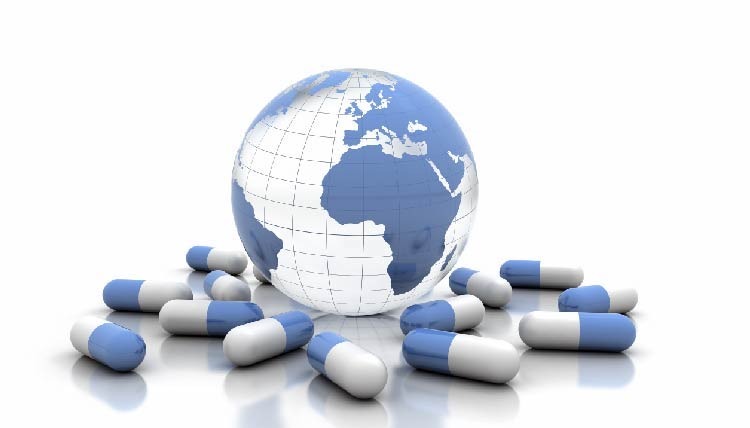Global Pharma Industry Growth Projected to Moderate in 2017 and Beyond
Total spending on medicines is forecast to reach $1.5 trillion by 2021, up 33% from 2016 levels even as annual growth moderates from the record pace set in 2014 and 2015. So what factors are impacting market performance?.
A recent analysis by QuintilesIMS projects that the global pharmaceutical industry will grow at a compound annual rate of 4% to 7% during the next five years, down from the nearly 9% growth level seen in 2014 and 2015. DCAT Value Chain Insights takes a look inside the numbers.
A look inside the global pharmaceutical market
Total spending on medicines is forecast to reach $1.5 trillion by 2021, up 33% from 2016 levels, but down from recent high growth rates in 2014 and 2015, according to a recent analysis by QuintilesIMS, Outlook for Global Medicines Through 2021: Balancing Cost and Value. Medicine spending will grow at a 4% to 7% compound annual growth rate (CAGR) during the next five years, down from the nearly 9% growth level seen in 2014 and 2015, according to the report. The short-term rise in growth in 2014 and 2015 was driven by new medicines in hepatitis and cancer that contributed strongly to growth but will have a reduced impact through 2021. On a volume basis, the total volume of medicines consumed globally will increase by about 3% annually through 2021, only modestly faster than population and demographic shifts. Issues of pricing, market-access pressures, lower volume growth in emerging markets, and further generic-drug incursion will contribute to the lower rate of growth, according to the analysis.;
The total global spend for pharmaceuticals through 2021 will increase by $367 billion on a constant-dollar basis, according to QuintilesIMS. Spending is measured at the ex-manufacturer level before adjusting for rebates, discounts, taxes and other adjustments that affect net sales received by manufacturers. The impact of these factors is estimated to reduce growth by $127 billion, or approximately 35% of the growth forecast through 2021.
“The outlook for medicine spending growth reflects a more sustainable level for health systems following the unexpectedly high growth seen in recent years,” said Murray Aitken, senior vice president and executive director of the QuintilesIMS Institute, in commenting on the report. “At the same time, the astonishing level of scientific advances for disease treatments inevitably will place ongoing pressure on funding for medicines—requiring value-based assessments that balance patient needs and pricing levels with competing healthcare priorities.
Most global spending growth, particularly in developed markets, will be fueled by innovations in oncology. autoimmune, and diabetes treatments. The US will continue as the world’s largest pharmaceutical market and pharmerging markets (the term used by QuintilesIMS to describe pharmaceutical emerging markets) will make up nine of the top 20 markets. The US will account for 53% of forecasted growth over the next five years while China will continue as the second largest market, a position it has held since 2012, contributing 12% of the growth. Developed market spending growth will be driven by original brands while pharmerging markets will continue to be fueled by non-original products that make up an average 91% of pharmerging market volume and 78% of spending. Specialty medicines are projected to increase their share in globally, particularly in developed markets. Specialty medicines’ share of global spending has risen to less than 20% ten years ago to 30% in 2016 and to 35% by 2021, approaching half of total spending in US and European markets, according to the study.
Innovation as a growth driver
New drug launches will reach historically high levels in the next five years, according to the QuintilesIMS report.The firm projects that more than 2,000 drugs in the late-stage pipeline will yield an expected 45 new active substances (NAS) on average annually through 2021. The new medicines will address a wide range of disease areas, including cancer and autoimmune, metabolic, and nervous system disorders. The number of cancer treatments, their potential combinations in treatment regimens and the variety of companies involved in development will bring complexity to the patient care landscape during the next five years, says the report.
Slowing growth in the US pharmaceutical market
Single-digit spending growth is forecast for the US. market. The US market growth rate will decline by half, from 12% in 2015 to 6% to 7% in 2016 with a 6% to 9% growth forecast through 2021 on an invoice-price basis. The decline reflects the end of hepatitis C treatment-driven growth and greater impact of patent expiries—including the introduction of biosimilars—following a period in which fewer brands faced new generic competition, according to the QuintilesIM study. US growth in 2014 and 2015 also was driven by historically high price increases for both brand drugs and generics on an invoice-price basis before the impact of off-invoice discounts and rebates. After adjusting for price concessions by manufacturers, spending growth is estimated to be more than 2 percentage points lower through 2021 and 4 percentage points lower in 2016—a 4% to 7% CAGR on a net-price basis.
Flat growth in the EU
European payers are expected to maintain tight constraints on drug budgets. Forecasted low pre-rebate and discount growth of 1% to 4% in the EU5 countries (France, Germany, Italy, Spain, United Kingdom) through 2021 reflects policymaker responses to unexpectedly high new drug spending in 2014 and 2015 and relatively weak economic growth in the region, according to the study. Looking forward, these budgeting weaknesses are expected to prompt European payers to redouble their efforts to bring predictability to their budgeting processes for drugs, according to the study. The impact of BREXIT on the UK pharmaceutical market is expected to be modest, driving at most a 1.5% slower growth rate.
Slowing growth in the emerging markets
Lower economic growth triggers slower expansion for medicine use in pharmerging markets, Leading pharmerging markets have seen real growth in gross domestic product slow from 1-4 percentage points over the past decade, according to the study. This has triggered a corresponding reduction in medicine volume growth, from an average of 7% annually over the past five years to 4% forecast through 2021. China, in particular, will see a decline in annual volume growth from 17% to 4% over the same period. Overall, volume growth continues to be driven by non-original products that account for 91% of the volume in pharmerging markets. The outlook for spending growth across these markets is expected to moderate from 10% CAGR over the past five years to 6% to 9% through 2021.







